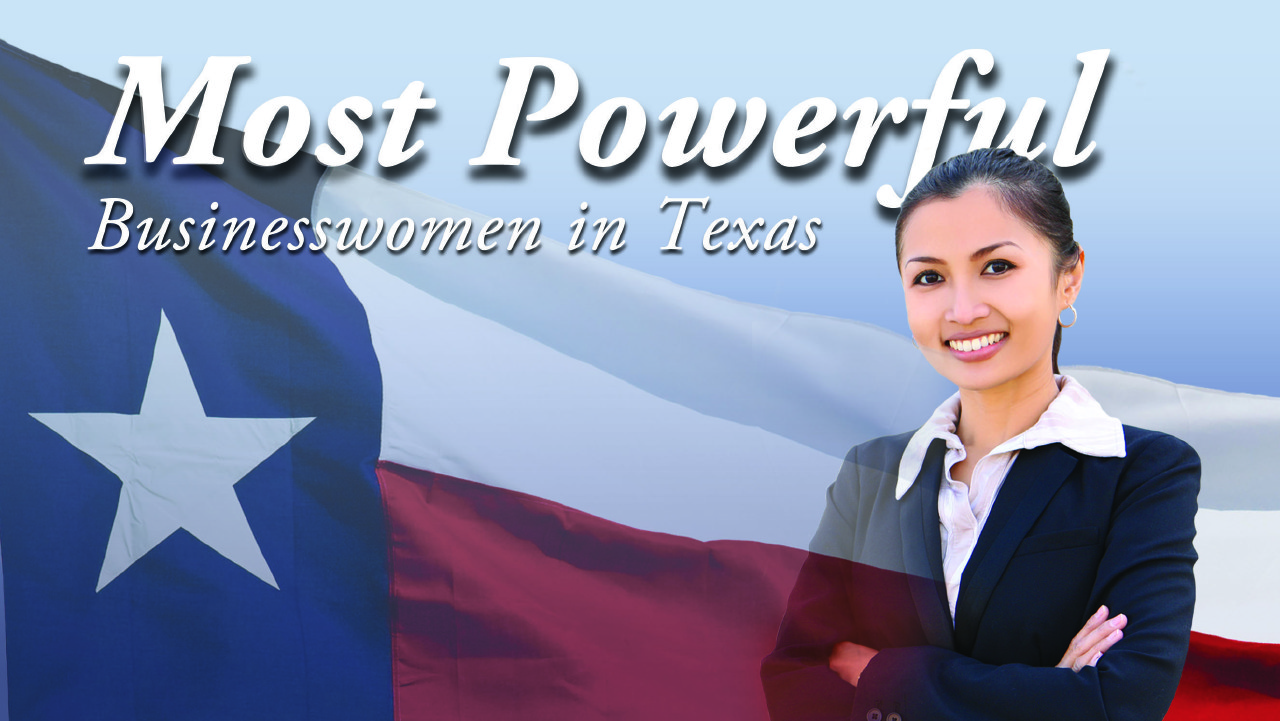You’d truly have to be living under a rock — or, to put it lightly, pretty backwards in your thinking — not to recognize the extreme importance of diversity in today’s world.
While diversity may feel a bit like a modern buzzword to some, it certainly isn’t a new concept; in theory, it predates civilization. In practice, however, the evolution of diversity — and, more specifically, the support around and emphasis placed on it – is a much more recent development. You don’t need a history degree to recognize that people haven’t always been exactly gracious toward those who have differences from them in terms of backgrounds, life experiences, and identities. Racial discrimination in the U.S., just as one example, wasn’t officially made illegal until 1964, and the recent Black Lives Matter movement testifies to how very far we still are from a post-racial world. Recent years have been full of both high-highs and low-lows for diversity — for every LGBTQ Supreme Court win, there’s a Charlottesville just around the corner, it seems. And that’s just the United States we’re speaking about; diversity has far less of a foothold in other locations across the globe.
So, when it comes to diversity and inclusion in the most modern sense, what progress have we made and what work still awaits us? We’ll take a look at this, as well as breaking down the different areas of diversity, below.
What is diversity?
The definition of diversity, according to Merriam-Webster, is “the condition of having or being composed of differing elements; variety; especially the inclusion of different types of people (such as people of different races or cultures) in a group or organization.”
One excellent way of understanding the importance of diversity today is by taking a look at biodiversity, in which the quantity of different organisms in any given ecosystem directly translates to the healthiness and productivity of that ecosystem. Not only that, but more diverse ecosystems are actually able to withstand and recover from natural disasters better than less-diverse ones — which is proof that diversity makes the planet, as well as us, stronger.
Now that we’ve (briefly) touched on the importance of diversity, let’s dig into its various forms.
Gender diversity
To preface any conversation about gender diversity, it’s important to first touch on gender identity and the understanding of how this is separate from sex and/or sexual orientation.
One’s “sex” references to your biological makeup and the sex you were assigned at birth. Gender, on the other hand, is your innermost identification of self as male, female, a blend of both, or neither, which may be the same or different from your sex. Transgender is the broad term for someone whose sex and gender do not correspond; cisgender refers to people whose sex and gender identity are the same.
The two most common gender identities are male and female, and people often think these are, in fact, theonly two gender identities — a concept known as the “gender binary.” Gender is a spectrum, however, something more and more people and even companies are coming to realize — Facebook, for example, now offers more than 50 options beyond male and female, including terms like “gender questioning,” “neither,” and “androgynous” for users to describe their gender identity. Genderqueer, also referred to as non-binary, is increasingly being used as the umbrella term for those who don’t identify as strictly masculine or feminine. Part of respecting people’s gender identity means referring to them by the pronouns they choose to identify as — which may be “he/him” or “she/her,” but can also be neutral pronouns like “zer/zim” or simply “they/them.”
However, just because a person may choose which term(s) best describes them doesn’t mean they’re choosing which gender they “want” to identify as — psychologists have determined that most people, both transgender and cisgender, are aware of their basic gender identity by age four. The terms used to describe one’s gender identity may change as the language surrounding gender continues to evolve, but it’s erroneous and offensive to claim that people “choose” their gender, similarly to accusing homosexual people of “choosing to be gay.” In most cases, one’s gender identity is a constant throughout their life.
Sexual orientation diversity
Just as people may believe “sex” and “gender identity” are the same thing, people often confuse the latter and sexual orientation as being the same, too. An important distinction to make here is that gender identity is highly personal and has solely to do with how we see ourselves. Sexual orientation, on the other hand, is interpersonal, having to do with how we relate to and connect with others — sometimes in a sexual way, but not exclusively (despite the moniker). Romantic and sexual orientations can be separate entities — i.e. who you are sexually attracted to is not necessarily who you are romantically attracted to, as is the case with asexual people (who do not relate to people in a sexual way).
Here are just a few of the many sexual orientations people may possess:
- Heterosexual: Attraction to a gender different from your own (most frequently used to describe someone who is gender binary — male or female — attracted to the other binary gender)
- Homosexual (or gay): Attraction to a gender the same as your own (most frequently used to describe someone who is gender binary and attracted to that same binary)
- Lesbian: Women who are attracted to other women; a female-specific term for homosexual
- Bisexual: Being attracted to two or more genders; it doesn’t have to mean that you are equally attracted to each gender
- Pansexual: Being attracted to all genders, and/or not relating gender to your attraction to someone
- Polysexual: Being attracted to many (but not necessarily all) genders
- Asexual: Not experiencing sexual attraction, though you may be romantically or emotionally attracted to others
Again, these are just a handful of the many sexual orientations that people may have. Sexuality can also be fluid, so people may identify with different orientations at different points in life.
Racial diversity
Americans today are more racially and ethnically diverse than ever before — and we’ll only become more so. By 2055, in fact, the U.S. is projected to not have a single racial or ethnic majority, according to Pew Research Center. A lot of this change is the result of immigration and our overall increasingly globalized society — in the past 50 years, nearly 59 million immigrants have arrived in the U.S., and a near-record 14 percent of today’s U.S. population is foreign-born (compared to 5 percent in 1965). The majority of immigrants to the U.S. are coming from Asia and Latin America, with Asia recently replacing the latter as the largest source of new immigrants to the country. And, since the year is thankfully no longer 1950, the increasing diversification of the U.S. is resulting in a lot more of one thing in particular — mixed race babies. According to Pew, the number of mixed-race Americans is increasing three times faster than the population of the U.S. as a whole, and by the year 2050, the average American will be of mixed descent.
Current attitudes toward this ethnic diversity boon are, quite sadly, mixed. Though Pew reports that just over half of Americans embrace diversity, believe immigrants strengthen the country, and think that ethnic diversity makes the U.S. a better place to live, 38% of respondents said immigrants are a burden. And their attitude is unfortunately reflected elsewhere, too. Between the Blue Lives Matter and All Lives Matter counter-protests to the growing backlash against police brutality toward African Americans, to the white supremacists who overran Charlottesville in August, to Donald Trump’s border wall plans, there’s no shortage of recent examples that prove racism is still alive and well.
Cultural diversity
Cultural diversity has more to do with the customs, beliefs, values, and norms associated with a particular community and/or ethnic groups than with race or nationality. For instance, your race could be Korean, but you were born and raised in California, and therefore that is the culture you ascribe to.
The U.S. has a long history of stamping out cultural diversity, the academic term for which is cultural assimilation. As one example, between the years of 1790 and 1920, the government led a forced cultural assimilation effort against Native Americans in an attempt to bring them into “white” civilization (and thereby be forced to leave their own cultural heritage behind). As part of this effort, indigenous children were separated from their families and placed in white-run boarding schools, where they were forced to adopt white names and subscribe to EuroAmerican cultural practices — or otherwise risk punishment and ridicule. Historically, religion has often been used to justify these kinds of efforts — with claims that the ruling body is trying to “save” those who they’re assimilating — but in reality, cultural assimilation is simply an extremely effective means of controlling an ethnic group that is different from your own. It’s especially used against groups that have been conquered or otherwise severely wronged to divorce them from a sense of separateness from their oppressors.
We can protect cultural diversity from assimilation efforts by enfranchising the open practice of ALL cultural heritages — i.e., by enabling Muslim employees with time and/or spaces to pray, as one example, or by ensuring that community resources are accessible to more than just English speakers.
Diversity in higher education
Many a university has — or should have — an Office of Diversity on their campus or affirmative action policies. These types of programs are hugely important for a variety of reasons, one of which being that an Office of Diversity can work to help ensure that higher education is attainable to students from a wide variety of backgrounds, regardless of factors like race and socioeconomic status. And the promotion of diverse campuses aren’t simply a boon to brown and Black students — everyone can stand to benefit from the rich blend of perspectives and experiences that come together when a commitment to diversity is part of campus life.
It’s important to note that a commitment to diversity shouldn’t simply be evident in a college’s student population, but in their faculty and leadership, as well. Current statistics don’t really support that this is seen as a priority, unfortunately — according to data from the U.S. Department of Education, 78 percent of full-time faculty members and 84 perfect of full-time professors at U.S. colleges and universities were white in 2013.
Workplace diversity
There are a number of crucial ways diversity in the workplace in all respects — gender, racial, ethnic, cultural, and in regards to sexual orientation — still needs to be improved today. We’ve broken down some of the key issues as they relate specifically to women below:
1) The Wage Gap
According to U.S. Census data, women in the U.S. make 82 cents for every dollar that a man earns — and that ratio only gets worse for non-white women. Yes, it has gotten better, but the US still ranks 74th in gender wage equality among 145 nations, down from 65th place in 2015. According to the World Economic Forum, it’s going to take another 118 years for the global wage gap to close — just in time for our granddaughter’s granddaughters to start looking for jobs.
2) Continuing Discrimination in Evaluation and Promotion
Women’s accomplishments at work tend to be evaluated and perceived differently. Research from Stanford University’s Clayman Institute for Gender Research found that “managers are significantly more likely to critique female employees for coming on too strong, and their accomplishments are more likely than men’s to be seen as the result of team, rather than individual, efforts.”
In 2011, McKinsey & Co.’s Joanna Barsh (a Fairygodboss advisor) found that women are often promoted based on performance while men are often promoted based on potential. What’s so telling about these differences? In other words, Stephen gets the promotion because he seems like the kind of guy who can do the job, while Stephanie has to actually demonstrate excellence at all the components of the job before management feels comfortable promoting her.
3) Diversity Management — Not Enough Women in Leadership Roles
According to the Center for American Progress, women now hold 52% of all professional-level jobs. And yet very few of them make their way to the top of the ladder. More than 45% of legal associates are female, but men are four times more likely to make partner. Women account for 78% of the labor force in health care and social assistance, but only 15% of the industry’s executive officers and 12% percent of its directors. The percentage of female CEOs in healthcare is zero.
In government, women hold 20% of Senate seats and 18.5% of House seats. America’s 50 states have just five female governors.
Indeed, one of the main themes that has emerged in our research for Fairygodboss is that women in management roles feel a tremendous sense of isolation as they advance in their careers. On any journey up the corporate ladder, it helps tremendously to have allies, mentors and role models. Yet without more women in leadership positions, the rest of us lack those role models — and can end up in a vicious cycle of wage depression and early exit from the workforce.
4) A Lack of Affordable, Quality Childcare
As an article in Quartz points out, “the lack of affordable day care may be the real reason that the glass ceiling exists.” In 30 states plus the District of Columbia, average annual daycare costs exceed in-state tuition at a 4-year college. In other words, the cost of daycare is such a high hurdle that many working mothers drop out of the workforce because they simply can’t afford to continue working.
5) The “Always-on” Workplace Culture
Many studies agree that the vast majority of Americans now work far longer than the 40-hour standard. In addition, technology – which was meant to help make work more efficient – has added a late-night second shift for many professional employees. Because women traditionally have borne greater responsibility for housework and childcare duties, longer work hours harm them disproportionately. Even barring those gender norms, someone has to make it home to the kids, and that’s usually the lesser earner (more often the woman – due to the wage gap). Combine that with a dissolving barrier between work and home life and, as Anne-Marie Slaughter wrote in a New York Times piece, “far too many [women] discover that what was once a manageable and enjoyable work-family balance can no longer be sustained — regardless of ambition, confidence or even a partner who shares tasks equally.”
6) Inferior Paid Maternity Leave Programs
This is one of the most important issues facing the U.S. workforce today, and it also has one of the most concrete and actionable remedies. Here are two things you probably don’t about paid maternity leave in America:
- The US is the only developed economy in the world that doesn’t mandate paid maternity leave. Let’s put that in context: out of 185 countries measured by the International Labour Organization, the U.S. is one of only three, along with Oman and Papua New Guinea, that don’t require employers to pay employees who have recently delivered a child.
- As a result, just 12% of US workers have access to paid maternity leave through their employers.
Thankfully, there are a few companies out there who are addressing this issue. Barclays, Netflix, Microsoft,Amazon, and Spotify have all recently made headlines by improving their paid maternity leave policies. Salesforce has recently undertaken a complete audit of compensation across its workforce, and is spending $3 million to close the gender pay gap. Microsoft is requiring employees to undergo diversity training to reduce unconscious bias. Google, Facebook and Dow Chemical (among others) have stepped up efforts to increase the number of women and minorities on their payrolls. SAS has been lauded for years for its exemplary on-site daycare program, which not only helps women but helps SAS attract talent. The company also encourages its employees to work no more than 37.5 hours a week, and makes a point to employ enough workers so that people aren’t routinely forced to work long hours.
Diversity training
One major way we can start taking on the ground that’s yet to be covered in workplace diversity is by placing more emphasis on (and pouring more resources into) diversity training at our companies.
Sustainability and human capital expert Jennifer Gilhool explains that many diversity programs haven’t been updated for the modern workplace. “The diversity programs that were popular in 2007 remain popular today,” she writes on LinkedIn. “These programs are, what I call, passive diversity programs. Little active engagement, if any, is required by organizational management.”
Management’s approach to diversity training is old-fashioned and, as many experts have noted, ineffective. Creating an inclusive environment that celebrates diversity is an inclusive process that can’t be outsourced; doing this leads to a lack of accountability, and is ultimately a waste of time and resources.
Diversity and inclusion training is important, but it must be done in an effective and impactful way. While there isn’t one perfect approach, there are some basics that can function as a foundation for a diversity training curriculum. Regardless of your organization’s focus and structure, these guidelines will help you create a more inclusive and diverse workplace.
1) Don’t “Divide and Conquer”
It’s important to recognize that different people view the world (and the workplace) differently. Separating employees by one or two identifiers (race, gender, sexual orientation, etc.) oversimplifies the problem and doesn’t help contribute to a diverse workforce. As Gilhool writes, “None of us is just one thing. We have many identity characteristics, including race and gender but also our health status, political and religious affiliations, relationship status and more…. Distilling a human being down to a single category is dehumanizing.”
Don’t separate trainees by demographics, and keep the human element in every aspect of training. Create diversity training sessions that encompass the many outlooks on diversity in the workplace. Understand that everyone is a combination of their experiences and that individuals are more than just what they look like.
2) Focus On the Benefits
Many dated diversity programs focus on the legal aspect of diversity hiring, a.k.a. the potential lawsuits a company could receive. Harvard sociologist and researcher Frank Dobbin says that focusing training on the hiring and firing of team members makes managers feel like they personally are the problem.
“A lot of the diversity training for managers tends to be about the law,” Dobbin told Fast Company. “They take the message that the employer is trying to prevent them from getting sued.”
Instead, focus on what diversity brings to the workplace. Take opportunities to talk about your company’s diversity goals and why it’s important for the company to reach them. What will you gain by being more diverse? How will your diversity be better? Explaining the importance of these goals to your colleagues will get everyone on the same page faster.
3) Make it Voluntary
It sounds crazy, but hear us out. Maximizing active participation in diversity training is important. “Active participation” means that the attendees actively contribute to the conversation; instead of just watching somebody click through a PowerPoint, attendees should ask questions and share their experiences.
When diversity training opportunities are truly optional, employees feel better about making a personal diversity initiative by participating. “Ironically, if you make it mandatory, training programs lead to decreases in the diversity of management teams,” Dobbin said. “If you force someone to go to something, they don’t have to try to make their beliefs and actions line up. [They] can think, ‘I’m only here because they forced me to do this.’”
A company that proved this successful? Google. Their voluntary training program on unconscious bias was attended by 60,000 employees, making it a success by their internal standards as well as those of corporate America. And yet, as proved by the recent anti-diversity memo, Google (along with several other companies) still has a long way to go when it comes to making its workforce a more inclusive environment. You can help by looking at your company’s policies and using the above advice to make a positive impact.
This article was recently published on www.fairygodboss.com





